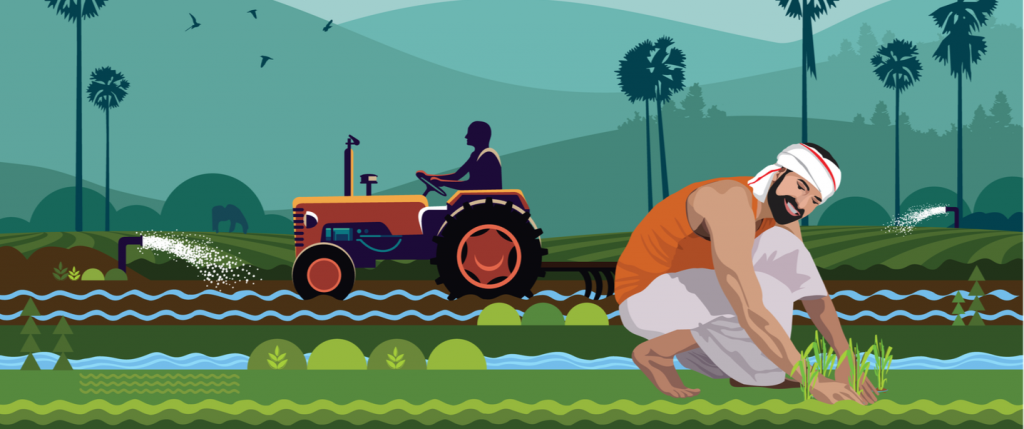Insights
Making millets, crops of the future, shine
March 25, 2023On India’s request, the UN FAO has marked the year 2023 as the International Year of Millets (‘IYM 2023’). This declaration is timely and welcome. Millets are a diverse group of small-seeded crop, and include varieties such asKodoo, barnyard, and foxtail. They are among the oldest crops to be grown in India.
Howeve, with its concerted agenda to boost wheat and rice, the Green Revolution was primarily responsible for relegating these humble crops to a footnote in Indian cuisine. It is lamentable that millets came to be derided as “coarse” and “primitive” grains, to indicate their inferior status vis-a-vis refined counterparts.

Unfortunate trend
A combination of biased agricultural policy and changing consumer preferences meant that millets receded in significance. This was an unfortunate trend considering the arsenal of environmental, agricultural and health benefits at their disposal. Millets are hardy crops resilient to climate change. They have potential to equip small farmers and promote biodiversity in agri-food systems.
The nutrient-dense nature of these grains, as well as their affordability, make them fit for addressing widespread hunger, malnutrition, and micronutrient deficiency. It is thus not surprising that millets are often termed as “crops of the future”. Millets represent a sustainable market opportunity in India and provide cause for optimism in the global food crisis. In the interests of ensuring the food security of an ever-expanding population and sustainable development, it is essential to nurture the production and consumption of millets in India through appropriate policy.
To achieve the goals of the International Year of Millets 2023, Indian policymakers must enable millets to shine. Promoting millets through policy existing schemes, such as the Integrated Cereals Development Programme in Coarse Cereals, focus on the supply of seeds and training of farmers.
Read More+
Introducing it in PDS
Efforts are underway to introduce millets under the Public Distribution System to improve nutritional security. Further, NITI Aayog has been advocating for the inclusion of millets under the Integrated Child Development Services Scheme and the mid-day meal scheme. While it is encouraging to note the abovementioned efforts, there is a long way to go.
Considering the multi-dimensional nature of the food security conundrum, it is useful to adopt a holistic approach to address it. Despite the existence of various government schemes, the adoption of millets has been slow. In this regard, Sustainable Development Goal 17 on partnerships provides useful guidance. It encourages “multi-stakeholder partnerships” to implement the 2030 Agenda. It also urges states to “encourage and promote effective public, public-private and civil society partnerships” that “mobilise and share knowledge, expertise, technology and financial resources” to support the realization of SDGs in developing countries.
This is based on the understanding that creating lasting change in local food systems necessitates the involvement of the private sector. To accelerate the mainstreaming of millets, the government must adopt a novel framework grounded in a multi-stakeholder and cross-sectoral ethos. Under this revised framework, which may be termed “Public-Private Partnerships for Nutrition’ or ‘PPP4N”, by entering strategic PPPs with private sector players, such as SMEs, MSMEs, and other organisations.
Such partnerships have significant advantages in the context of nutrition. They could enable the state to tap into the resources, knowledge, and expertise of the private sector. Illustratively, partnerships could be focused on areas like value-chain development, technology transfer, and product reformulation.
Renewed focus to speed up output
A renewed focus on collaboration with the private sector could accelerate millet production, consumption, and overall cultural mainstreaming. Moreover, it would be amiss to neglect the powerful role played by the food and beverage (‘F&B’) industry in shaping food systems. A dedicated point of focus of the PPP4N framework, therefore,should be tactical engagement with F&B players. Such entities can considerably boost the uptake of millets by ensuring greater availability of millet-based products in the market.
Moreover, they can direct their efforts towards improving nutritional outcomes through product reformulation, better labelling standards, and increasing awareness among consumers. A holistic approach, as outlined above, aligns with Sustainable Development Goal 17.
To make this a reality, the state must overcome common obstacles that come in the way of nutrition-related PPPs, such as trust deficit between the public sector and the private sector, and conflict of interests. Strategic alignment, instituting robust accountability mechanisms, and ensuring that the partnership is engineered transparently with a goal to improve public health nutrition, would be key to the success of such an initiative.
Conclusion
Millets are the crops of the future due to their unique environmental, agricultural and health advantages. The IYM 2023 is an apt opportunity to mainstream the humble crops after decades of disregard. Harnessing a novel PPP4N framework could prove valuable in realising the full potential of millets, while simultaneously achieving positive nutrition and public health outcomes. India could be on its way to becoming the millet capital of the world.
This article was originally published in The Hindu Business Line on 25 March 2023 Co-written by: Sohini Banerjee, with inputs from Siddharth Nair, Partner and Nawneet Vibhaw, Partner. Click here for original article
Read Less-
Contributed by: Sohini Banerjee, with inputs from Siddharth Nair, Partner and Nawneet Vibhaw, Partner
Disclaimer
This is intended for general information purposes only. The views and opinions expressed in this article are those of the author/authors and does not necessarily reflect the views of the firm.

